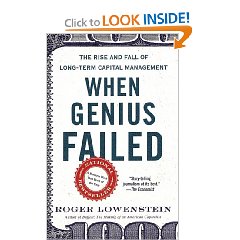
The interesting part of the book is its analysis of the various reasons behind LTMC’s success. A billion dollars was raised from investors subsequently. It made another 43% after fee the following year. The hedge fund had a stellar start by making 28% in its first year of operation. Meriwether very quickly assembled his old team at Salomon and founded LTCM the next year.

Meriwether was very successful during that period as the group made more than US$500 million annually for five years before he quit Salomon Brothers in 1993, mainly due to a trading scandal perpetrated by his subordinate.

And they made tonnes of money from trading bond spreads, which, to put it simply, is trading bonds by comparing the value of one bond to another. Meriwether embarked on a hiring spree to take in several people from the academic world and formed The Arbitrage Group at the firm. Quants, as these people were known as, wasn’t a glorious word back then. Banks hired extremely smart academicians and mathematicians during the 1980s, mostly for research purposes, as they were deemed unfit for trading. The edge Meriwether found at Salomon Brothers was the untapped brain power of the academic world. He was smart and understood that one needs an edge to stand out in the market. He wasn’t crude and loud, but a reserved and intensely private person. He grew up in a Catholic community in Chicago and was accustomed to a “pervasive sense of order”. He was “the priest of calculated gamble”, not a reckless poker player. Lowenstein starts his book by casting a different light on Meriwether. How did Meriwether respond? He upped the stake to US$10 million and Gutfreund backed off. Hence, the famous quote of the book: “One hand, one million dollars, no tears.”

“King of Wall Street” John Gutfreund, then CEO of Salomon Brothers Inc, had walked up to his trading desk for a US$1 million poker game. If you have read Liar’s Poker by famous financial journalist and writer Michael Lewis, you would know that Meriwether is a poker player with an enormous risk appetite. However, at the heart of the story is John Meriwether, the founder of LTCM who was known as one of the finest bond traders at that time. The fund was Long-Term Capital Management (LTCM), and the two Nobel laureates - Myron Scholes and Robert Merton - are the ones who developed the Black-Scholes model widely used to value options contracts today. Ity, to see how a bunch of geniuses, with the help of two Nobel Prize winners, ran a hedge fund so wildly successfully in the 1990s, until it wasn’t. Written by an American journalist Roger Lowenstein, When Genius Failed arrived at my doorstep last August during the lockdown period.


 0 kommentar(er)
0 kommentar(er)
